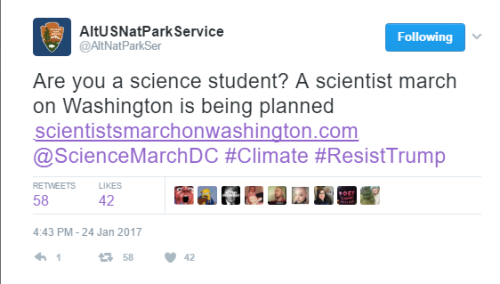@maevemauvaise I Doubt The Full Results Of This Experiment Are Going To Be Released Soon, But I’ll
@maevemauvaise I doubt the full results of this experiment are going to be released soon, but I’ll post and tag you when I find them!
More Posts from Maevetheeuropan and Others
Solar System: Things to Know This Week
Learn about the science of photonics to create space communications, get updates on Juno, mining data from Voyager for new discoveries and more.

1. Carried on a Beam of Light
One of our major priorities is to make space communications more efficient. While our communications systems have matured over the decades, they still use the same radio-frequency system developed in the earliest days of the agency. After more than 50 years, we’re investing in new ways to increase data rates while also finding more efficient communications systems. Photonics–generating, detecting and manipulating particles of light–may provide the solution.
+ See how it works

2. It’s No Joke: Two New Moons for the Seventh Planet
Voyager 2 spacecraft flew by Uranus 30 years ago, but researchers are still making discoveries using the data it gathered. A new study led by University of Idaho researchers suggests there could be two tiny, previously undiscovered moonlets orbiting near two of the planet’s rings.
+ Find out how they were discovered

3. Vortex of Mystery
As southern winter solstice approaches in the Saturn system, our Cassini spacecraft has revealed dramatic seasonal changes in the atmospheric temperature and composition of Saturn’s largest moon, Titan. Winter is taking a grip on Titan’s southern hemisphere, and a strong, whirling vortex has intensified in the upper atmosphere over the south pole.
+See more

4. The Spiders of Mars
Ten thousand volunteers viewing images of Martian south polar regions have helped identify targets for closer inspection, yielding new insights about seasonal slabs of frozen carbon dioxide and erosional features known as “spiders.” From the comfort of home, the volunteers have been exploring the surface of Mars by reviewing images from the Context Camera on our Mars Reconnaissance Orbiter and identifying certain types of seasonal terrains near Mars’ south pole.
+ Learn more and see how you can join in

7. Better Safe than Sorry
Juno entered safe mode last week and early indications are a software performance monitor induced a reboot of the spacecraft’s onboard computer. In this case, the safe mode turned off instruments and a few non-critical spacecraft components, and it confirmed the spacecraft was pointed toward the sun to ensure the solar arrays received power.The spacecraft acted as expected during the transition into safe mode, restarted successfully and is healthy. High-rate data has been restored, and the spacecraft is conducting flight software diagnostics. Meanwhile, the Juno science team continues to analyze returns from the first close Jupiter flyby on Aug. 27. Revelations so far include that Jupiter’s magnetic fields and aurora are bigger and more powerful than thought. Scientists have also had their first glimpse below the planet’s swirling cloud deck. The next close flyby is scheduled on Dec. 11, with all science instruments on.
+ Get the details
Discover the full list of 10 things to know about our solar system this week HERE.
Make sure to follow us on Tumblr for your regular dose of space: http://nasa.tumblr.com

The Exoplanetary Menagerie
Today a massive discovery was announced: 39 light years away in the TRAPPIST-1 star system seven terrestrial planets all orbit extremely close to each other.
…and three are well within their star’s “habitable zone”.
TRAPPIST-1 is an ultra-cool dwarf star. Because its temperature is so much lower than a typical star like the sun (it’s roughly 2550 K while the sun’s 5772 K) planets are able to orbit much closer than they could in our Solar System and sustain habitable conditions. All seven of the discovered exoplanets orbit closer to TRAPPIST-1 than Mercury does to the sun.
Of the different planets discovered, one is immensely Earthlike, having a similar size and receiving roughly the same amount of light as Earth. This place could be a whole lot more like home than anything we’ve found yet. Another planet is a potential water-world, getting about as much light as does Mars (with an atmosphere, yes, it could be a liquid water world).
So close do these planets all orbit near to each other that if you were to go to one and look up, you could see the other planets in the sky above you… and they’d be as big as *or larger than the Moon is in our sky*. It must be one of the most beautiful sights.
So what’s the big deal right? NASA’s already found over 3000 exoplanets - what makes these ones special?
A few remarkable things:
One, TRAPPIST-1 is a member of the M-class stars - stars which make up 70% or so of all the stars out in the Milky Way. Knowing that such stars can host magnificent habitable planetary systems means the search for life just got blown wide open to 70% of the stars in our galaxy.
Two, though 39 light years seems far, this is actually unimaginably close. We’re basically neighbors. The fact that TRAPPIST-1 is so close means that astronomers will be able to subject this place to decades of intense research.
As NASA begins to turn space telescopes such as Hubble, Kepler and Spitzer on TRAPPIST-1, I think we’ll be hearing a lot more from it soon.
Before you go, please consider joining the Planetary Society. If TRAPPIST-1 intrigues you, just wait until you see what else we have happening.
At the Planetary Society we have a radio show with some of the most groundbreaking material to include exoplanet hunters, engineers designing interstellar missions and interviews with astronauts. Most important though, we go to D.C. and make sure the politicians continue funding NASA and space science, and we reach out to people and try to show them what could be.
On that note, here are some artist conceptions of the TRAPPIST-1 star system and what could be:





So good job to the team that made this discovery (especially lead author Michaël Gillon) and I can’t wait to learn more about this place soon.
(Image credit: NASA-JPL/Caltech, NASA/JPL-Caltech/R. Hurt (IPAC), NASA/JPL-Caltech/T. Pyle (IPAC), NASA/JPL-Caltech/R. Hurt (IPAC), ESO/M. Kornmesser and NASA-JPL/Caltech respectively)
Getting to Mars: What It’ll Take
Join us as we take a closer look at the next steps in our journey to the Red Planet:
The journey to Mars crosses three thresholds, each with increasing challenges as humans move farther from Earth. We’re managing these challenges by developing and demonstrating capabilities in incremental steps:
Earth Reliant

Earth Reliant exploration is focused on research aboard the International Space Station. From this world-class microgravity laboratory, we are testing technologies and advancing human health and performance research that will enable deep space, long duration missions.
On the space station, we are advancing human health and behavioral research for Mars-class missions. We are pushing the state-of-the-art life support systems, printing 3-D parts and analyzing material handling techniques.
Proving Ground

In the Proving Ground, we will learn to conduct complex operations in a deep space environment that allows crews to return to Earth in a matter of days. Primarily operating in cislunar space (the volume of space around the moon). We will advance and validate the capabilities required for humans to live and work at distances much farther away from our home planet…such as at Mars.
Earth Independent

Earth Independent activities build on what we learn on the space station and in deep space to enable human missions to the Mars vicinity, possibly to low-Mars orbit or one of the Martian moons, and eventually the Martian surface. Future Mars missions will represent a collaborative effort between us and our partners.

Did you know….that through our robotic missions, we have already been on and around Mars for 40 years! Taking nearly every opportunity to send orbiters, landers and rovers with increasingly complex experiments and sensing systems. These orbiters and rovers have returned vital data about the Martian environment, helping us understand what challenges we may face and resources we may encounter.

Through the Asteroid Redirect Mission (ARM), we will demonstrate an advanced solar electric propulsion capability that will be a critical component of our journey to Mars. ARM will also provide an unprecedented opportunity for us to validate new spacewalk and sample handling techniques as astronauts investigate several tons of an asteroid boulder.
Living and working in space require accepting risks – and the journey to Mars is worth the risks. A new and powerful space transportation system is key to the journey, but we will also need to learn new ways of operating in space.
We Need You!

In the future, Mars will need all kinds of explorers, farmers, surveyors, teachers…but most of all YOU! As we overcome the challenges associated with traveling to deep space, we will still need the next generation of explorers to join us on this journey. Come with us on the journey to Mars as we explore with robots and send humans there one day.
Join us as we go behind-the-scenes:
We’re offering a behind-the-scenes look Thursday, Aug. 18 at our journey to Mars. Join us for the following events:
Journey to Mars Televised Event at 9:30 a.m. EDT Join in as we host a conversation about the numerous efforts enabling exploration of the Red Planet. Use #askNASA to ask your questions! Tune in HERE.
Facebook Live at 1:30 p.m. EDT Join in as we showcase the work and exhibits at our Michoud Assembly Facility. Participate HERE.
Hot Fire Test of an RS-25 Engine at 6 p.m. EDT The 7.5-minute test is part of a series of tests designed to put the upgraded former space shuttle engines through the rigorous temperature and pressure conditions they will experience during a launch. Watch HERE.
Make sure to follow us on Tumblr for your regular dose of space: http://nasa.tumblr.com

It’s super shitty quality but here it is!

Mars Orbiter Mission: April 11, 2016 Clouds over Olympus Mons, April 11th 2016
Olympus Mons is a large shield volcano on the planet Mars. It has a height of nearly 22 km. Olympus Mons stands almost three times as tall as Mount Everest’s height above sea level. It is the youngest of the large volcanoes on Mars, having formed during Mars’s Amazonian Period. Several meteorological factors contribute to cloud formation. This MCC image was taken on April 11, 2016 at an altitude of 22,794 km and resolution of 1,185 meters. The image shows cloud around Olympus Mons Region.

GUYS https://twitter.com/AltNatParkSer/status/824054953404669953 http://www.scientistsmarchonwashington.com/ THE NATIONAL PARK SERVICE IS IN OPEN REBELLION

The Body’s Price on Space Exploration
It can be easy to get wrapped up in the dollar amount when talking about the price of sending humans to Mars but there is a factor that no amount of government or private funding can overcome: the human body.
Read more on Miss Aerospace
When Can I Die on Mars?
Elon Musk recently announced SpaceX’s plans to send a spacecraft to the surface of Mars by 2018. It’s never been easier to die on Mars.
By: Fraser Cain. Support Universe Today on Patreon
-
 maevetheeuropan reblogged this · 8 years ago
maevetheeuropan reblogged this · 8 years ago -
 maevemauvaise reblogged this · 8 years ago
maevemauvaise reblogged this · 8 years ago -
 maevemauvaise liked this · 8 years ago
maevemauvaise liked this · 8 years ago -
 laurathia reblogged this · 8 years ago
laurathia reblogged this · 8 years ago
